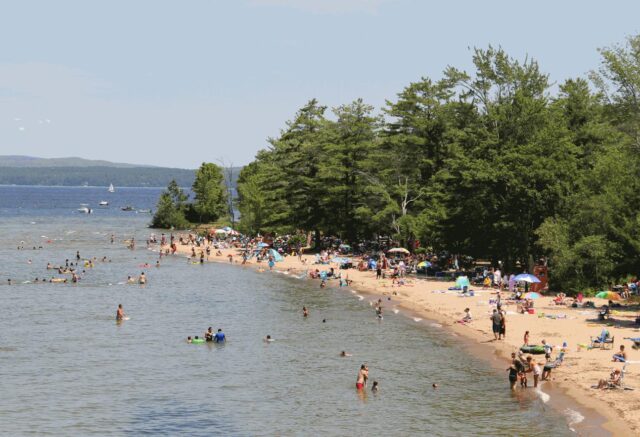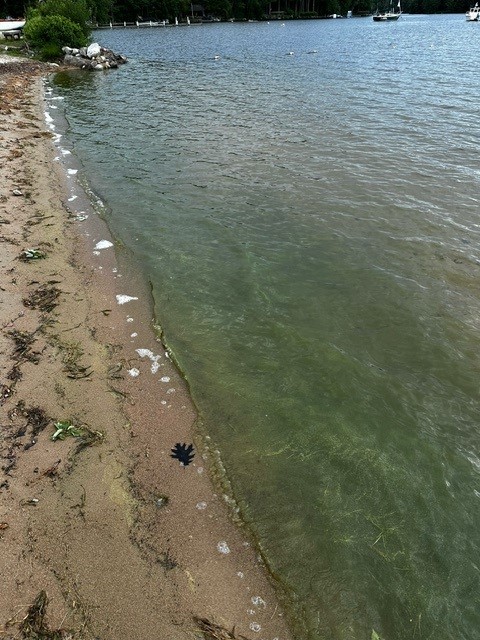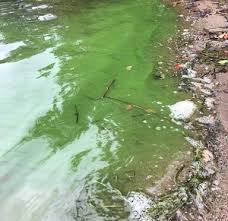By Mitchell Craig, SCA Interpretive Ranger
Lake Winnipesaukee, the crown jewel of New Hampshire, is a beloved destination for both locals and tourists. Known affectionately as Lake Winni, its picturesque waters and vibrant recreational activities have made it a must-visit spot in the state for hundreds of years, from the tranquil shores of Ellacoya State Park to the scenic beauty of Wentworth State Park.

However, in June 2024, this cherished lake faced a significant challenge with the detection of cyanobacteria, commonly known as blue-green algae. These microscopic organisms naturally inhabit freshwater ecosystems but can produce harmful toxins under certain conditions. The New Hampshire Department of Environmental Services (NHDES) issued a warning after cyanobacteria blooms were reported on Lake Winnipesaukee, describing the blooms as toxic to individuals, pets, and livestock.


Cyanobacteria warnings are issued when the amount of cyanobacteria in the water goes over the safe limit of 70,000 cells per millimeter. At this level, there is a risk that harmful toxins could be present, which pose a threat to public health. Exposure to cyanobacteria primarily occurs through direct contact with skin or ingestion of water.
When a cyanobacteria bloom is identified, NHDES advises all watercraft and swimmers to avoid contact with the affected area. These blooms typically occupy small sections of the lake, often in shallow, warm coves, but can spread through wind, waves, and boat action. For example, boat propellers can disperse cyanobacteria to deeper waters or different parts of the lake.

Cyanobacteria blooms result from a combination of climate and human impacts. Extreme weather events can increase surface runoff of phosphate, a known contributor to these blooms. Phosphates from fertilizers, pesticides, and debris can wash into the lake during rain events, increasing nutrient levels and promoting bacterial and algae growth. This process, called lake eutrophication, is a main contributor to increased cyanobacteria presence.
Cyanobacteria blooms have been found in other lakes and rivers in New Hampshire. According to NHDES, a total of 64 water bodies in New Hampshire have been impaired by cyanobacteria in the past. A cyanobacteria bloom can last a couple days, a week, months, or on a recurring basis during warmer, summer months. These cyanobacteria blooms can negatively impact the recreational experience for boaters, swimmers, and aquatic wildlife.
To treat cyanobacteria, state agencies and non-governmental organizations are teaming up to eliminate cyanobacteria from New Hampshire’s water bodies. Water quality monitoring programs play a crucial role in detecting and tracking cyanobacteria blooms. In addition to monitoring, treatment efforts may include nutrient management strategies to reduce the amount of phosphorus and nitrogen entering water bodies, as these nutrients fuel cyanobacteria growth. Public education about the signs and dangers of cyanobacteria can help NHDES spot blooms and prevent public health safety issues.

If you see or suspect a cyanobacteria bloom, report it to NHDES using this online form. Do not drink, swim, or wade in the water.
The post Beware the Bloom: Cyanobacteria & Lake Winni appeared first on NH State Parks.
